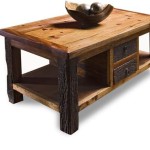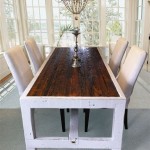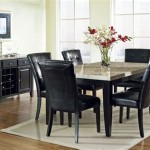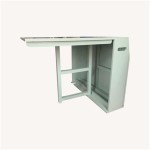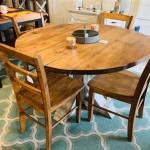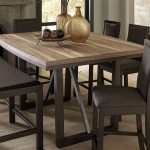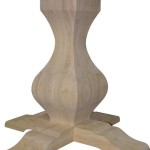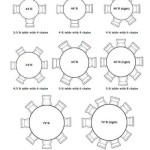Centerpieces for Small Dining Room Tables: Maximizing Style and Space
The selection of a centerpiece for a small dining room table requires careful consideration. The goal is to enhance the aesthetic appeal of the space without overwhelming it or hindering functionality. A well-chosen centerpiece can transform a simple dining area into a focal point, reflecting the homeowner's personal style and creating an inviting atmosphere. However, in smaller spaces, the challenge lies in finding the right balance between decorative impact and practicality. This article will explore various strategies for selecting and styling centerpieces that complement small dining room tables, focusing on achieving maximum visual impact with minimal spatial intrusion.
Scale and Proportion: Prioritizing Visual Harmony
The cornerstone of successful centerpiece selection for a small dining room table is understanding the importance of scale and proportion. A large, bulky arrangement can quickly dominate the table, making it feel crowded and uncomfortable. Conversely, a centerpiece that is too small may appear insignificant and get lost amidst the surrounding elements. The ideal centerpiece should be appropriately sized in relation to the table’s dimensions and the overall room size.
A general guideline is to choose a centerpiece that occupies approximately one-third to one-half of the table's surface area. This allows ample space for place settings, serving dishes, and other dining essentials. Vertical height also plays a crucial role. A tall centerpiece can visually expand the space, but it should not obstruct views across the table, hindering conversation and creating an awkward dining experience. Low-profile arrangements or those with slender, elevated structures are often more suitable for smaller dining rooms.
Before committing to a particular centerpiece, it is advisable to measure the table and visualize the proposed arrangement in situ. Using painter’s tape to mark off the area the centerpiece will occupy can provide a helpful visual aid. Consider the shape of the table as well. Round tables often benefit from circular or asymmetrical arrangements, while rectangular tables may be well-suited to linear designs.
The materials used in the centerpiece also contribute to the perception of size and scale. Light, airy materials such as glass, wire, or delicate flowers can create a sense of spaciousness, while heavier materials like stone, wood, or dense foliage may make the table feel more cramped. Consider the existing décor and choose materials that complement the overall style of the room without adding unnecessary bulk.
Functional Versatility: Adapting to Dining Needs
The primary function of a dining table is to facilitate meals, and the centerpiece should not impede this purpose. A centerpiece that is constantly being moved to accommodate serving dishes or place settings becomes a nuisance and detracts from the dining experience. Prioritizing functional versatility is key to selecting a centerpiece that seamlessly integrates into the daily routine.
One effective strategy is to opt for modular or easily adjustable centerpieces. For instance, a collection of small vases or candle holders can be arranged in various configurations, allowing for flexibility when needed. Alternatively, a tray or platter can serve as a base for a decorative display, which can be easily removed or repositioned as required. These adaptable options provide the aesthetic benefits of a traditional centerpiece without compromising functionality.
Consider the types of meals typically served at the table. If large family-style dinners are common, a minimalist centerpiece that can be quickly cleared away may be the most practical choice. Conversely, if the table is primarily used for more formal occasions, a more elaborate arrangement might be appropriate, provided it does not overcrowd the space. The frequency of use and the types of meals served should inform the selection of the centerpiece.
Another aspect of functional versatility is the ability to easily clean and maintain the centerpiece. Arrangements that require constant watering, pruning, or dusting can become burdensome, especially in a busy household. Opting for low-maintenance options such as artificial plants, dried flowers, or decorative objects that can be easily wiped down can save time and effort. Consider the practicality of the centerpiece from a maintenance perspective to ensure its long-term appeal and usability.
Beyond its primary decorative function, a centerpiece can also serve a practical purpose. A fruit bowl, a bread basket, or a collection of decorative napkins can all double as centerpieces, adding visual interest while providing functional value. This approach is particularly beneficial in small dining rooms where space is limited and every element must serve a purpose.
Creative Material Choices: Expanding Design Possibilities
The choice of materials for a centerpiece can significantly impact its overall aesthetic and its ability to complement a small dining room. Moving beyond traditional floral arrangements opens up a wide range of creative possibilities, allowing for personalized and visually striking displays that enhance the space without overwhelming it.
Natural elements, such as driftwood, stones, or seashells, can create a serene and organic ambiance. These materials are often readily available and can be arranged in a variety of configurations, from simple, minimalist displays to more elaborate sculptural arrangements. The textures and colors of natural materials can add depth and interest to the table without adding unnecessary visual clutter.
Consider incorporating metallic accents to add a touch of glamour and sophistication. Small, polished bowls, candlesticks, or decorative figurines can reflect light and create a sense of spaciousness. Metallic tones such as gold, silver, or copper can complement a variety of color schemes and add a subtle shimmer to the dining room. However, it is important to use metallic elements sparingly, as too much can create a cluttered or overwhelming effect.
Glass containers, such as vases, jars, or bowls, are versatile and adaptable options for centerpieces. They can be filled with a variety of materials, from flowers and greenery to decorative stones and fairy lights. The transparency of glass allows light to pass through, creating a sense of airiness and preventing the centerpiece from feeling too heavy or imposing. Consider using colored glass to add a pop of color to the dining room.
Textural contrasts can also enhance the visual appeal of a centerpiece. Combining smooth and rough textures, such as polished stones and woven baskets, can create a dynamic and engaging display. Experimenting with different textures can add depth and interest to the table, drawing the eye and creating a focal point. However, it is important to maintain a sense of balance and avoid overwhelming the space with too many conflicting textures.
Seasonal decorations can also be incorporated into the centerpiece to reflect the changing seasons. Pine cones and berries in the winter, fresh flowers in the spring, colorful gourds in the fall, and seashells in the summer can all add a festive and thematic touch to the dining room. Seasonal centerpieces can be easily updated and refreshed, providing a dynamic and engaging focal point throughout the year.
Color Palette and Cohesion: Establishing a Harmonious Look
The color palette of the centerpiece should complement the existing décor of the dining room to create a cohesive and harmonious look. Consider the colors of the walls, furniture, and accessories when selecting the colors for the centerpiece. A well-chosen color palette can tie the room together and create a sense of visual balance.
Monochromatic color schemes, which feature variations of a single color, can create a sophisticated and elegant look. Using different shades and textures of the same color can add depth and interest to the centerpiece without overwhelming the space. For instance, a centerpiece featuring various shades of green, from light sage to deep emerald, can create a calming and organic ambiance.
Complementary color schemes, which pair colors that are opposite each other on the color wheel, can create a vibrant and dynamic look. For example, pairing blue and orange or red and green can add a pop of color to the dining room. However, it is important to use complementary colors sparingly, as too much contrast can be overwhelming. Consider using one color as the dominant hue and the other as an accent color.
Analogous color schemes, which feature colors that are adjacent to each other on the color wheel, can create a harmonious and calming look. For instance, pairing blue, green, and purple can create a serene and restful ambiance. Analogous color schemes are often easier to work with than complementary color schemes, as they tend to blend together more seamlessly.
Neutral color schemes, which feature shades of white, gray, beige, and brown, can create a timeless and elegant look. Neutral colors provide a versatile backdrop for other decorative elements and can be easily paired with pops of color. A neutral centerpiece can be a particularly good choice for a small dining room, as it can help to create a sense of spaciousness and lightness.
Consider the overall style of the dining room when selecting the color palette for the centerpiece. A modern dining room might benefit from a minimalist color scheme with clean lines, while a rustic dining room might be well-suited to a more earthy and organic color palette. The color palette should reflect the overall aesthetic of the space and create a sense of visual cohesion.
The use of color can also influence the perceived size of the dining room. Light colors tend to make a space feel larger and more open, while dark colors can make a space feel smaller and more intimate. If the goal is to create a sense of spaciousness, consider using light and airy colors in the centerpiece. Conversely, if the goal is to create a cozy and inviting atmosphere, darker and richer colors may be more appropriate.

Beautiful And Easy Dining Room Table Centerpiece Ideas Stonegable

Beautiful And Easy Dining Room Table Centerpiece Ideas Stonegable

Gorgeous Round Table Centerpiece Ideas For Summer Perfecting Places

Centrotavola Da Cucina Vassoio Quotidiano 18 Nuove Idee Farmhouse Dining Rooms Decor Room Table Centerpieces

15 Great Decor Ideas For Kitchen Table Centerpieces Centerpiece Dining

23 Winter Centerpiece Ideas Diy Table Decorations

Kitchen Table Centerpiece Design Ideas Hgtv Pictures

Create Stunning Centerpieces For Your Dining Table With These Effortless Ideas Home Room Centerpiece

Simple Dining Table Centerpiece Ideas The House On Silverado

80 Best Dining Room Ideas And Decorating Tips

